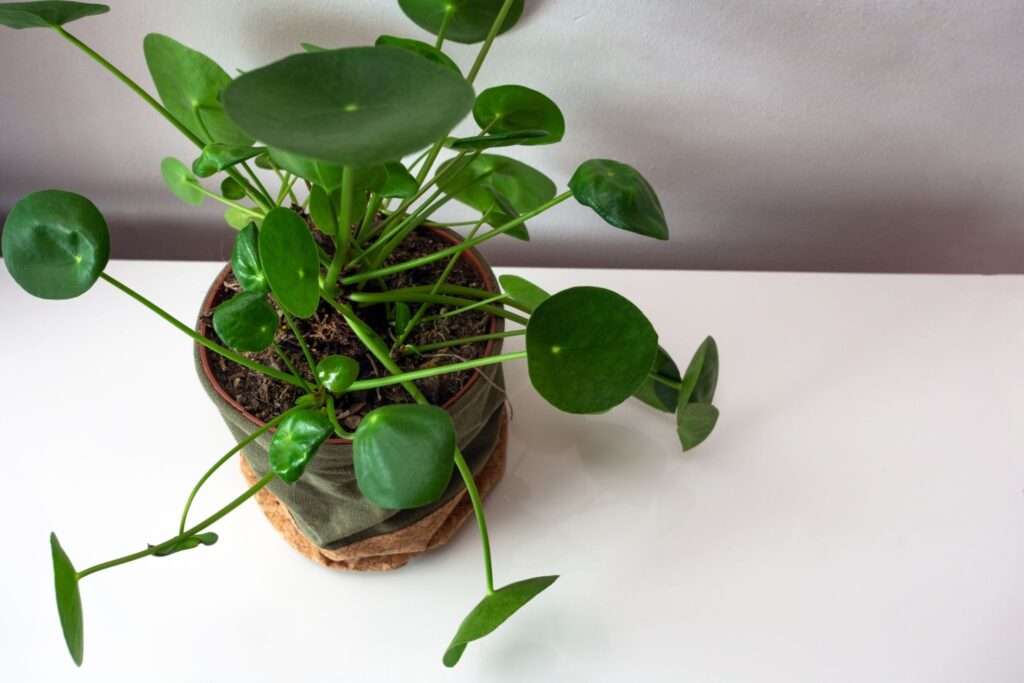The Chinese Money Plant, or the pilea peperomioides, is one of the must-have houseplants growing in popularity throughout the years. The plant’s Chinese name would translate to flat-faced grass. They are quite attractive and their unique shape makes them a favorite among many gardeners.
Unfortunately, you may have noticed the Chinese Money Tree leaves curling, and what is worse is that it’s actually a common problem a lot of people experience. Not only do leaves curl, but they tend to drop, so it leaves you wondering why, when you have done what you can to give it the proper care and nutrients it requires.
Read on to find out!

Why Are My Chinese Money Tree Leaves Curling?
Once you get your own Chinese Money Tree, the last thing you want to happen is its leaves curling, among other health issues. What is fortunate is that the reasons behind its leaves curling can be fixable with small changes, so you can nurse it back to health in no time!
Here are a couple of common reasons why your Chinese Money Tree leaves are curling:
1. Low Light Source
This is a common issue of your leaves doming or curling outwards. Leaves will reason to lower light conditions by exposing as much of the surface area as they can to reach any light around so it can go through photosynthesis.
To prevent this from happening, place your plant in a bright area without direct sunlight, which can scorch its leaves instead. You may need to move your plant now and then as the light levels would change based on the day’s weather and current season.
2. Overwatering and Underwatering
One of the major factors of the leaves changing shape is the water content it receives. If you overwater your plant, the leaves would absorb even more water than needed. This would result in its leaves’ distortion, which is curling downwards, as it would try maximizing the water they are holding.
Besides overwatering, not giving your plant enough water will give it curled leaves, reducing its surface area so as to reduce water loss.
How can you avoid overwatering or underwatering your plant?
Be sure that you check your plant every day to know if it needs to drink. If the soil looks dry, top it off with water only until 1-2 inches of the topsoil is covered, and wait for it to drain before you water it again. Stay consistent with this and avoid adding too much water or ignoring your plant’s thirst for days.
3. Temperature Issues
One might presume that the Chinese Money tree prefers warm temperatures. However, they really prefer the cooler weather.
When the temperatures are too warm, it encourages the leaves to become cupped or curl upwards. This may be from the water loss the leaves experience due to high temperatures.
These plants prefer temperatures between 13-18 degrees C but can also tolerate colder temperatures to as low as 7 degrees C. If ever your plant is in temperatures above the recommended range, reduce it little by little. Do NOT make the sudden change and drop the temperature immediately, since this can stress your plant.
Since they come from areas in China that aren’t far from the equator, the plants evolved in areas where it is uncommon to experience rapid drops or spikes in temperature.
This also means that the erratic house temperatures from the heater or air conditioning can have your plant’s leaves curling. Avoid placing the plant near doors, windows, or a cooling and heating system. Keep a thermometer by the plant to monitor its surrounding temperature to ensure it is in good condition.
4. Humidity Issues
There are gardeners who have claimed that their plant leaves curling may be related to any humidity issues. However, this isn’t a significant factor. While this plant prefers moderate to high humidity, there aren’t any major negative effects experienced when the humidity reaches as low as 20%. Take note that this is a case-to-case basis, though, so if you believe that you are treating your plant well and the humidity levels aren’t up to par, then consider changing this.
The reason why the Chinese money tree doesn’t change when humidity levels lower is because it has a few succulent features, so it is reasonably resistant to lower humidity levels and water scarcity. They aren’t as tolerant compared to other hardier succulents, though!
Don’t let the humidity levels reach 20%, as much as possible. Keep the levels between 40-50% for better growth.

5. Nitrogen Deficiency
Have you experienced the bottom leaves curling up and yellowing? There are three reasons behind this, such as:
- Aging leaves would eventually turn yellow and fall off, which is just part of their life. Expect new leaves to replace the old ones soon.
- Overwatering is another reason, as mentioned above
- Nitrogen deficiency is one of the main reasons behind its yellowing. While these plants don’t require much fertilizer, they do appreciate feeding once a year or so.
If you aren’t overwatering your plant and the yellow leaves seem young, remove the leaves and feed your plant with balanced houseplant fertilizer. You may want to fertilize your plant monthly during the spring and summer seasons.
Wrapping It Up
When you see your Chinese Money tree leaves curling, there are various reasons why it happens, making it somewhat tricky. Check what you feel might be lacking with your tree and provide it the ample nutrients and basic requirements it needs for it to grow, and monitor it for a few days, seeing if that solves the issue. These are just small changes that can greatly affect the plant’s growth and can help maintain a healthy set of leaves for the long run.
Continue learning more about this plant and how to care for it well now! Good luck and hopefully, your leaves stop curling up soon after this.